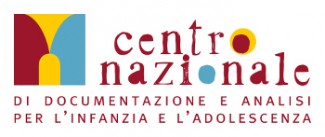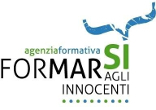Minors, identified risk factors for abuse and maltreatment
16 November 2016

Children living in families characterized by social isolation are five times more likely to experience maltreatment, while humiliation experienced in the family could increase the likelihood of maltreatment in adulthood up to 14 times. These are some of the data emerging from the Italian Report of the Multi-Country Study on the Drivers of Violence in Childhood, conducted by a team of researchers from the Istituto degli Innocenti under the supervision of Unicef Office Research and the University of Edinburgh, in order to identify factors that predispose to the risk of abuse and maltreatment.
This is the first comprehensive study of this magnitude, carried out on all the most important surveys conducted in Italy on the topic of violence against children over 15 years. The Report represents the conclusion of the first phase of an international project involving, in addition to Italy, Zimbabwe, Vietnam and Peru, with the aim of obtaining a comprehensive picture of the statistical data and being able to develop effective interventions for prevention purposes.
The research, which lasted nearly two years, considered 237 surveys, from which 59 of the most comprehensive and in-depth ones were chosen for further analysis. The result is condensed into an eighty-page Report-including a glossary of terms and definitions-that draws a picture of the main drivers leading to violence against children. Beyond family dynamics, in fact, the study investigates elements of a more structural nature, such as the economic, political and cultural situation of a community, as possible risk factors.
Approximately 20 percent of adolescents in Italy are frequently bullied outside and inside the school setting (Istat, 2014), while 47 percent of minors taken into care by services have experienced forms of material or emotional neglect (Cismai, Terres des hommes, 2015), 10.6 percent of women were sexually abused before the age of 16, and 0.8 percent were victims of serious forms of sexual abuse such as rape (Istat, 2015).
The analysis divides risk factors into several levels: structural, concerning the socioeconomic status and ethnic-based discrimination; community, related to the social dynamics around the child and family; and individual and interpersonal, referring to the family environment and past experiences of abuse suffered or witnessed in the family.
Different factors interact with each other creating more and less risk situations. Fundamental remains the family context. Studies, in fact, show, for example, that women who lived in families in which there were secrets and/or a tendency to accuse each other were found to be twice as likely to be sexually abused and 6.5 times more likely to experience episodes of physical or emotional abuse (Bianchi and Moretti, 2006). Witnessing domestic violence can also have serious repercussions for children: the likelihood that people will engage in intimate partner violence increases from 5.2 percent to 22 percent if they have witnessed their father's violence on their mother (Istat, 2015).
Exposure to violence is also one of the drivers for developing forms of bullying, acted upon or suffered. The 2014 Istat survey on bullying in and out of the school setting shows that nearly 20 percent of 11- to 17-year-olds are frequently bullied, a percentage that exceeds 50 percent if those who experience sporadic acts are added. Numbers such that researchers will focus more on this phenomenon, along with cyberbullying, during the second phase of the project.
In fact, the next step of the International Study will involve an in-depth study of a single form of violence, leading, in the third and final phase, to the identification of effective interventions for prevention.
The total duration of the project is four years. The first results will be presented at a comparison with the other countries involved, which will be held in early 2017.
Last update: 09/15/2023 - 14:36





